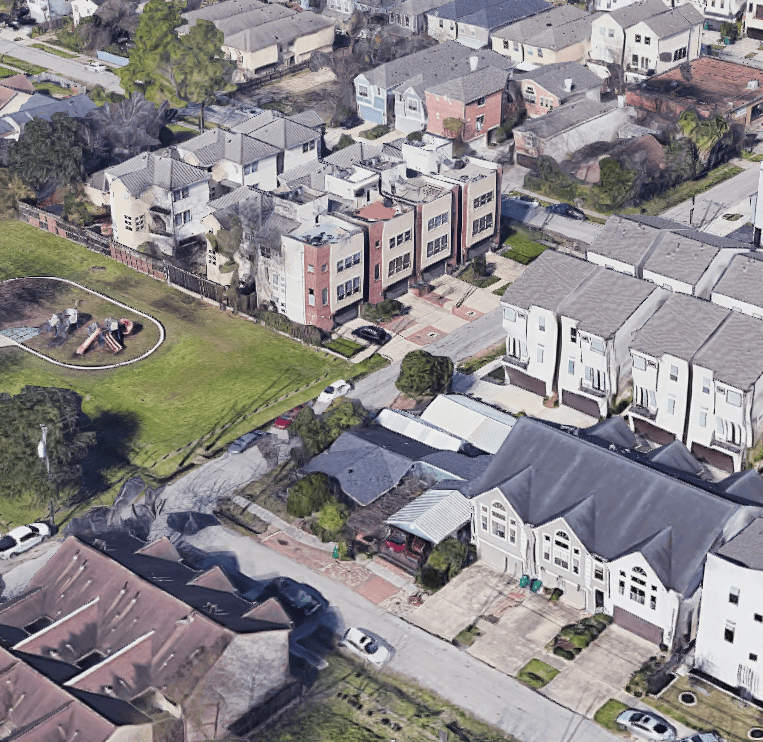
#YIMBY twitter, you don't want to miss #SB349 - "Increase Housing Opportunities" - introduced today in North Carolina's Senate.
It's a fourplex bill. It's an ADU bill. It's got a @cmsandefur-flavor "no downzoning without cause" component. And it's got one of the biggest changes to a SZEA since Euclid: a jurisdiction may not entirely zone out any use other than industrial, nuisances, and strip clubs.
Let's get into it, shall we?
First, it's got bipartisan & geographically diverse sponsorship. I can't handicap its chances, but this doesn't look like someone's statement bill.
@SenChuckEdwards, @paulnewtonnc, @fitch_toby wrote it, and @ValFoushee is the first co-sponsor.
@SenChuckEdwards, @paulnewtonnc, @fitch_toby wrote it, and @ValFoushee is the first co-sponsor.

@SenChuckEdwards @paulnewtonnc @fitch_toby @ValFoushee I say "wrote it" - there's enough technical and procedural stuff in here that there's no way an economist could have written it; whoever did suggest the language knew the system, probably the hard way.
This will be reported as a fourplex bill - and it *is* a fourplex bill. It defines "middle housing" as 2-4plex (but "quadplex", not fourplex) plus townhouses. (Sorry Dan P). And it legalizes them in areas zoned residential that have either water or sewer connections.
It protects private covenants & historic districts. (So expect more demand for both of those).
It might also get reported as an ADU bill. And it's a darn good ADU bill.
- ADUs everywhere
- No parking requirement
- No conditional use permits
- ADUs everywhere
- No parking requirement
- No conditional use permits
It also shuts down owner-occupancy requirements, although that's redundant with state case law (Wilmington v. Broadus, 2008). I'm guessing most people & most city/county staff don't know that, so it's good to put the constitution into statute.
Oh and parking? You're not going to need that for your North Carolina ADU. It's exempt from the state vacation rental law. It can be connected to existing utilities. And it can't face fees except a building permit fee.
This is already one of the more ambitious zoning reform bills I've seen and the scroll bar is only 10% of the way down.
Now it gets technical. If I recall correctly, NC tightened up some vested rights provisions last year (but don't quote me). This closes a loophole: towns can't strip vested rights over a minor technicality.
[Vested rights: you pull a permit, and then the county changes the rules, you get to keep the old rules if you want.]
NOW THE GOOD STUFF:
"A local government shall not adopt or enforce an ordinance downzoning property that has access to public water or public sewer, unless the local government can show a change in circumstances that substantially affects the public health, safety, or welfare.
"A local government shall not adopt or enforce an ordinance downzoning property that has access to public water or public sewer, unless the local government can show a change in circumstances that substantially affects the public health, safety, or welfare.
This is a big deal. @cmsandefur will probably say that there ought to be a partial takings compensation opportunity, and she'd be right. (Maybe amend it to say that's allowed?) But that means libertarians think this is an aggressive limit on government action. Smoke that.
@cmsandefur The next clause is
"A local government shall not adopt or enforce an ordinance that establishes a ban or has the effect of establishing a ban on a use of land that is not an industrial use, a nuisance per se, or that does not otherwise pose a serious threat to the public health, safety, or welfare"
This is why I referenced Euclid. In Euclid v. Ambler, the US Supreme Court basically said "apartments are a nuisance". The authors of this ball are D*A*R*I*N*G anyone to make that claim today. And if not, then every jurisdiction has to allow apartments somewhere. 

(And farm stands, and firearm dealers, and rodeo training academies, and law offices - you get the idea. But there's a carveout for "adult establishments" and, as you saw, industrial uses.)
There's a remedy section - a private right of action - but it's not clear that the remedy can handle this last part, since it basically lets a builder import non-preempted code from a different part of town.
On page 8, there's some nice language reminding everyone that "ambiguities in land development regulations are to be construed in favor of the free use of land." I'm not sure that matters, but it gives cover to any aggressive judges out there.
Then we get a lot of procedural stuff that I don't pretend to understand. And it's all effective immediately - even for permits already pending. But this is a terrible way to end a great thread, so let's rewind:
"A local government shall not adopt or enforce an ordinance that establishes a ban or has the effect of establishing a ban on a use of land that is not an industrial use, a nuisance per se, or that does not otherwise pose a serious threat to the public health, safety, or welfare"
• • •
Missing some Tweet in this thread? You can try to
force a refresh




